 |
This approach to running TestComplete tests as part of a release pipeline is obsolete. We do not recommend using it. Starting from version 14.20, to run TestComplete tests as part of a build, you can use the TestComplete test adapter. To learn more, see Integration With Azure DevOps and Team Foundation Server. |
After you have configured a release pipeline, you can create a release for a build. Your TestComplete tests will run during the release deployment.
Requirements
Computers where your TestComplete tests will run must have the following software installed:
-
If you use Visual Studio Test tasks to run tests:
Build and Release Agent for Windows.
If you use Run Functional Tests tasks to run tests (available for Team Foundation Server 2015 Update 2–2017 On-Premises):
Test Agent for Microsoft Visual Studio.
Note: You can use the Visual Studio Test Agent Deployment task to install the test agent. To learn about the requirements the remote computers where the test engine will be installed must meet, see the task description.
 The build agent or test agent must be running as an interactive process so that TestComplete can interact with the desktop and with the tested application UI.
The build agent or test agent must be running as an interactive process so that TestComplete can interact with the desktop and with the tested application UI.An interactive user session must be opened on the computer where the agent is running. You can open the session manually, or, if you use Team Foundation Server 2018 or later, you can configure the agent to run with the auto-logon enabled so that it opens a user session automatically when it starts.
-
TestComplete 14 (or TestExecute 14).
-
TestComplete 14 Visual Studio Integration Package.
The Integration Package installer is shipped along with TestComplete. You can find it in the TestComplete folder after installing the product:
<TestComplete 14>\VS Integration\VSIntegration.exe
Run this installer after installing TestComplete on your build computer or test agent computers. In the installation wizard, select a Test Agent Integration feature appropriate to your agent version.
Create a Release
-
Open the web portal of your team project. You can navigate to your web portal directly in your web browser or open it from Visual Studio Team Explorer.
-
If you use Azure DevOps Services, Azure DevOps Server 2019, or Team Foundation Server 2018, navigate to the Pipelines > Releases page.
If you use Team Foundation Server 2015 Update 2–2017, navigate to the Build & Release > Releases page.
-
Select the needed release pipeline and then click Create a release:
-
In the resulting dialog, select a build that you want to deploy:
Click Create to create a release.
-
On the Releases page, view the release status. You can click the release to view detailed information on the deployment status of each of its stages:
View Test Results
-
After the release is over, view the release status:
-
Click a status to view its detailed logs:
-
Switch to the Tests page to view test results:
-
Select the needed test and click the link in the Attachment section to open or save the attached TestComplete test log:
 |
If a test run fails, check whether your TestComplete project files that your release uses reside in the folder, where your test agents can access them, and that TestComplete (or TestExecute) is installed on the computers, where your tests run. |
See Also
Run TestComplete Tests as Part of Release Pipeline
Defining a Release Process

 Requirements
Requirements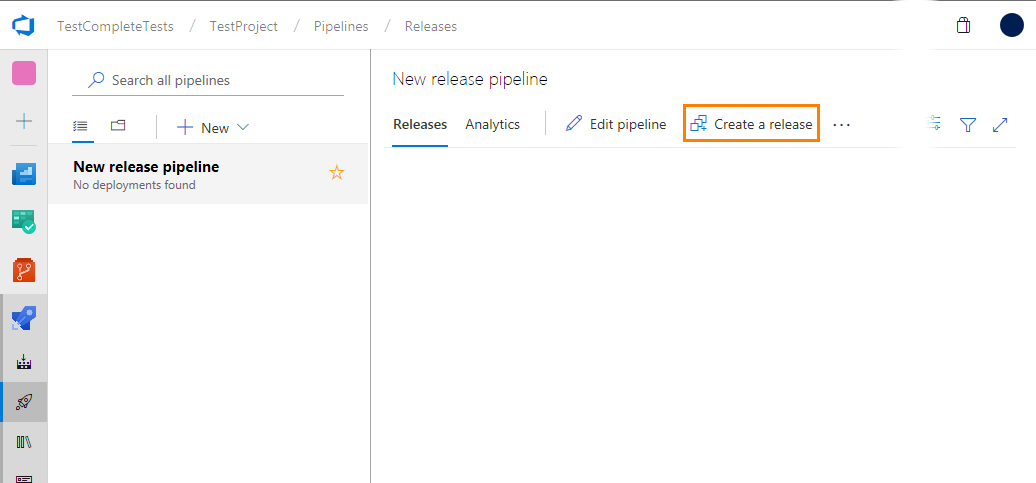
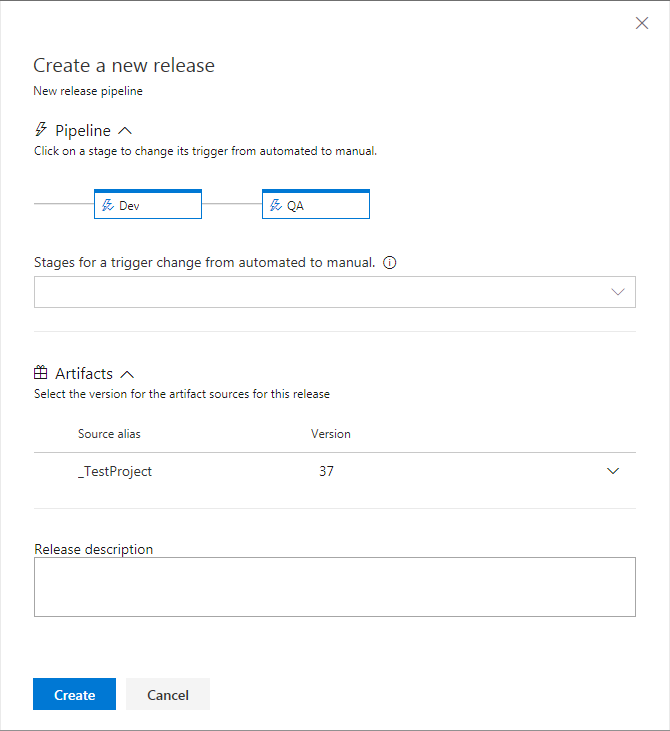
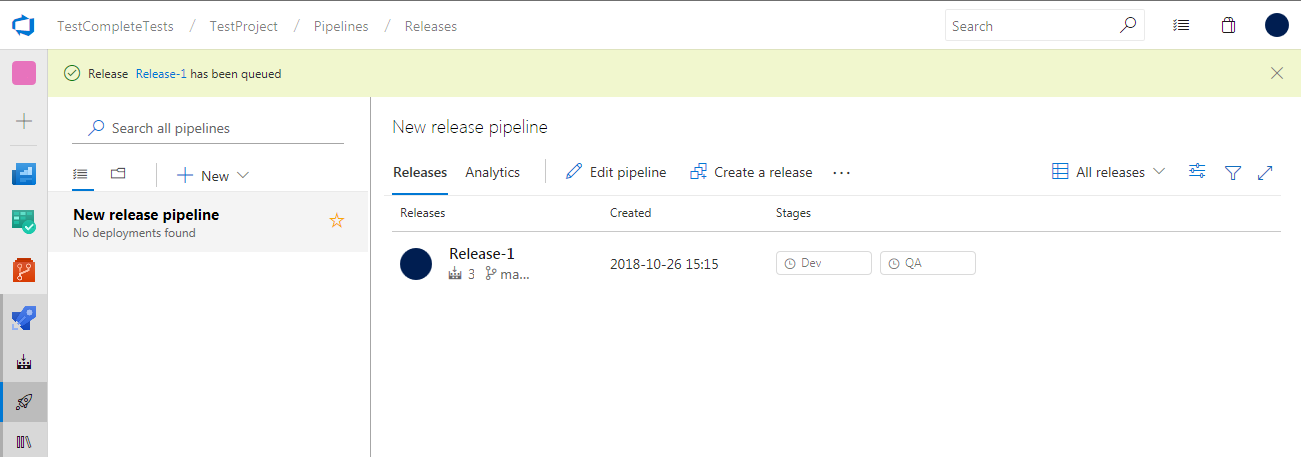
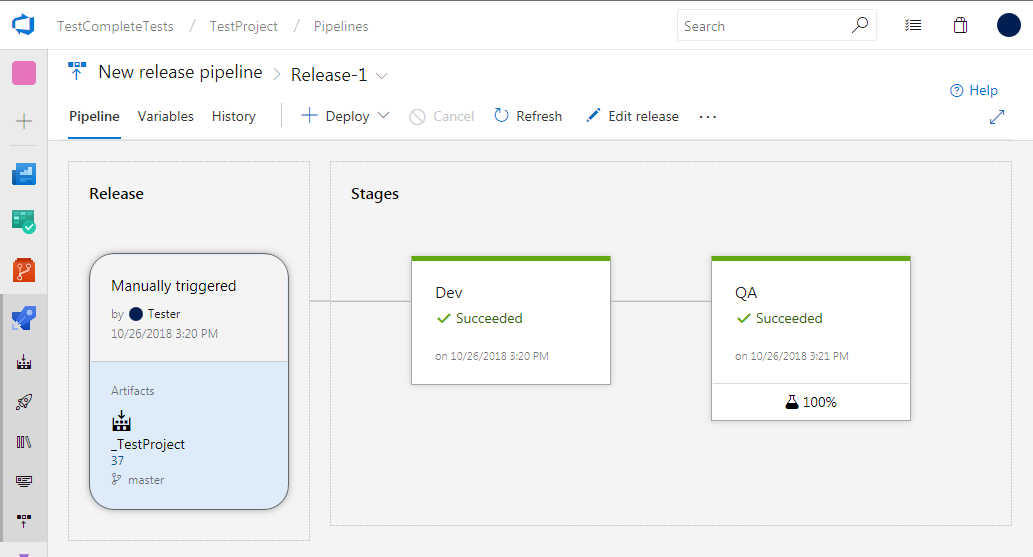

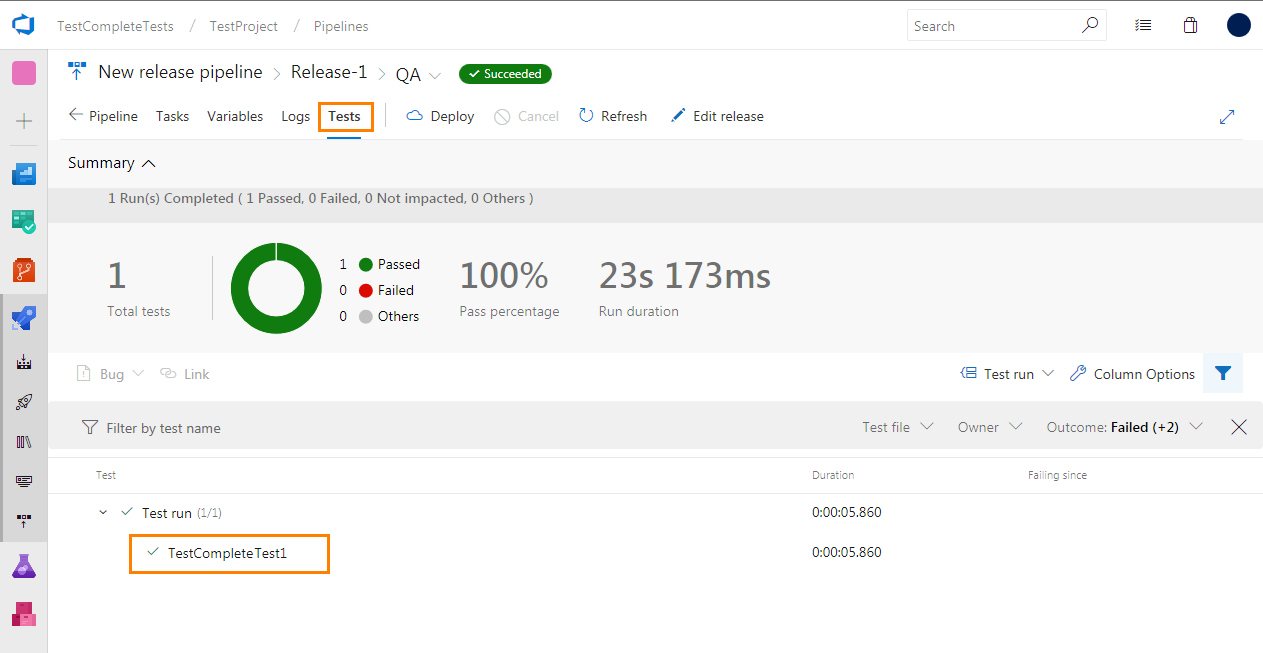
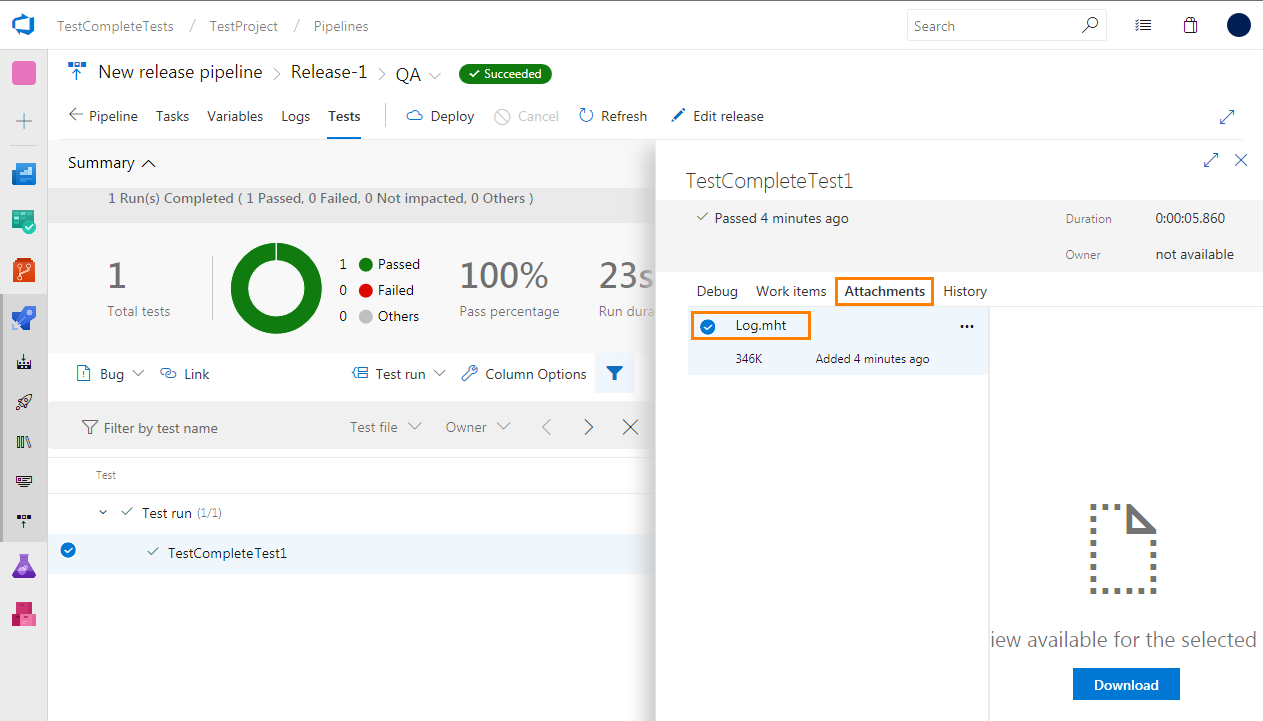
 Prev
Prev